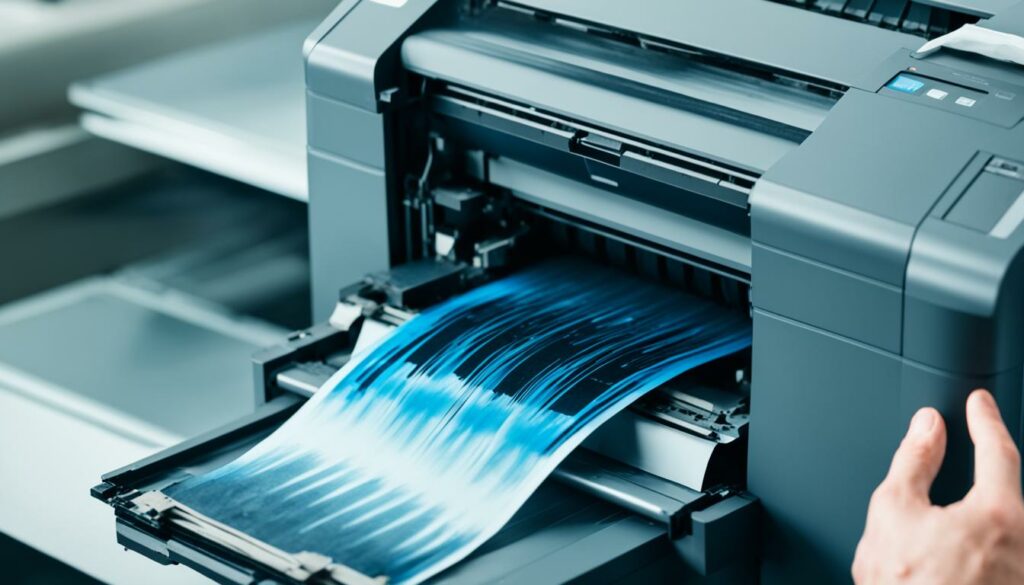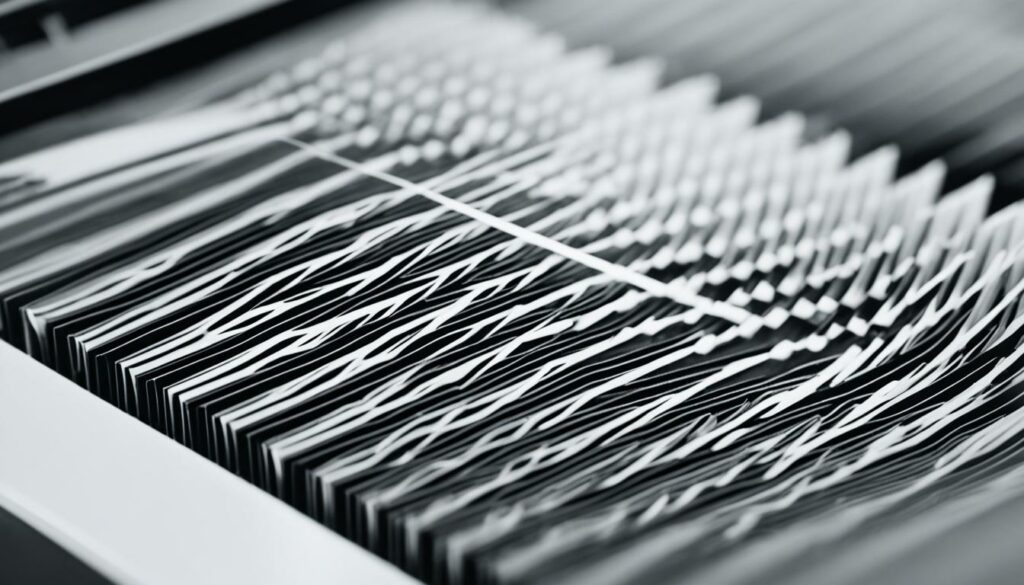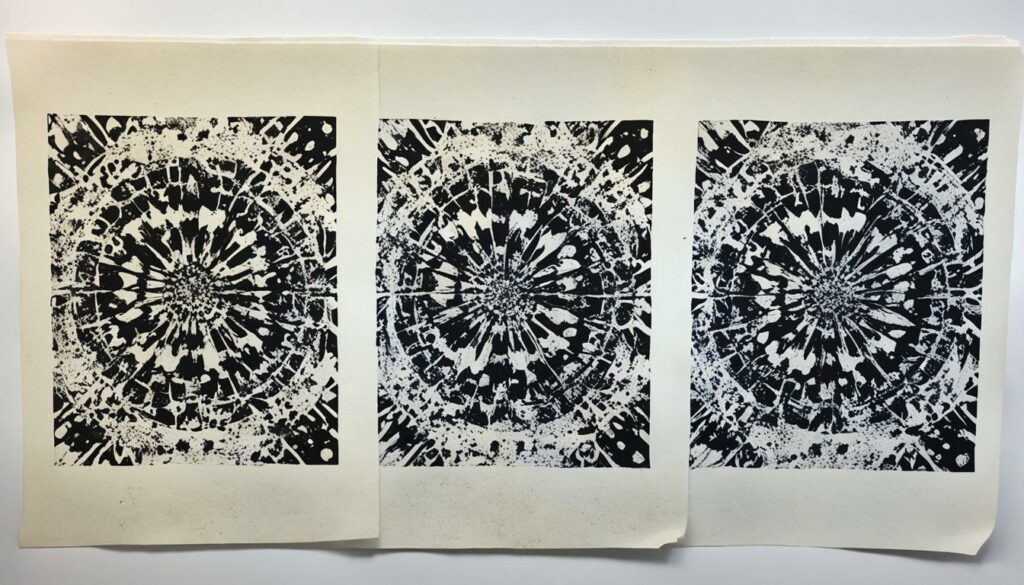Is your printer acting up and causing you headaches? One of the most common culprits behind printer performance problems is the fuser. Understanding and troubleshooting printer fuser issues is essential for ensuring smooth and efficient operation. In this guide, we’ll delve into the world of printer fuser problems and provide you with easy solutions to resolve them.
Whether you’re experiencing strange noises, image defects, paper jams, or error codes, we’ve got you covered. By addressing these fuser-related issues, you can restore your printer’s performance and avoid costly repairs or replacements.
Key Takeaways:
- Printer fuser issues can significantly impact your printer’s performance.
- Common symptoms of a bad fuser include noise, image defects, paper jams, and error codes.
- Noise issues can stem from worn-out drive gears or damaged components in the fuser.
- Image defects can result from a worn fuser film sleeve or incorrect temperature settings.
- Error codes such as the 50 service error can indicate fuser failures and thermistor errors.
Top Symptoms of a Bad Fuser
When your printer’s fuser starts to malfunction, it can display a range of symptoms indicating a potential issue. By identifying these common symptoms, you can take the necessary steps to resolve the problem and ensure the optimal performance of your printer.
Noise: One of the primary indicators of a bad fuser is noise coming from the fuser area. This can include humming, grinding, or chirping noises caused by worn-out components. Pay attention to any unusual sounds coming from your printer.
“I recently noticed a strange humming noise coming from my printer. After some investigation, I discovered that it was coming from the fuser area. It turned out that the fuser drive gear had worn out, causing the noise. Replacing the gear resolved the issue, and now my printer is running quietly again.”
Image Defects: Another symptom of a bad fuser is image defects on printed pages. These defects can manifest as vertical lines, ghosting, or toner rubbing off. If you notice any of these issues, it’s likely related to the fuser.
Error Codes: A malfunctioning fuser can trigger error codes on your printer’s display. These codes typically indicate a fuser failure or related issues. Keep an eye out for error messages that directly mention the fuser or refer to temperature or drive circuit faults.
- Common Error Codes:
- 50 Service Error
- Fuser Warm Up Failure
- Low/High-Temperature Thermistor Error
Paper Jams: One of the consequences of a worn fuser is an increased likelihood of paper jams. If you consistently experience paper jams and notice specific locations where the paper gets stuck, it could be due to a faulty fuser.
By recognizing these symptoms of a bad fuser, such as noise, image defects, error codes, and paper jams, you can determine whether your printer requires a fuser replacement or repair. Now that you understand the signs, let’s explore the troubleshooting steps and the process of replacing a printer fuser in the upcoming sections.
Overview of Fuser Symptoms
| Symptom | Description |
|---|---|
| Noise | Noises coming from the fuser area, such as humming, grinding, or chirping |
| Image Defects | Vertical lines, ghosting, or toner rubbing off on printed pages |
| Error Codes | Error messages specifically related to the fuser or indicating temperature/drive circuit faults |
| Paper Jams | Consistent paper jams, often occurring at specific locations |

Noise Issues with the Fuser
One common symptom of a bad fuser is noise coming from the fuser area. This noise can vary depending on the specific issue. It can be a humming noise caused by a worn-out drive gear, a grinding noise from the swing plate or fuser, or a chirping or squeaking noise when a shaft or roller in the fuser rotates inside a worn or damaged bushing. These noises indicate that the fuser components may need to be replaced to resolve the issue.

If you notice any of these noise issues with your printer’s fuser, it is important to address them promptly. Ignoring the noise can lead to further damage and potential breakdown of the fuser. Fortunately, replacing worn-out drive gears, swing plates, or damaged bushings is relatively straightforward and can restore the quiet operation of your printer.
Image Defects Caused by the Fuser
A faulty fuser can result in various image defects on printed pages. These defects can significantly affect print quality and overall satisfaction. Understanding the common image defects caused by the fuser can help diagnose and address the underlying issues properly.
Vertical Lines on Printed Pages
One well-known image defect that can occur due to fuser-related issues is the presence of vertical lines on printed pages. These lines can be darker gray in color and may disrupt the overall appearance of the printed document.
Repeated Images or Ghosting
Another common image defect associated with a faulty fuser is the occurrence of repeated images or ghosting. This defect happens when the fuser film sleeve, responsible for transferring toner onto the paper, wears out. As a result, residual toner remains on the sleeve, causing repeated images to appear on subsequent prints.
Toner Rubbing Off
Toner rubbing off from printed pages is another issue that can arise due to improper temperature settings in the fuser. If the fuser is not reaching the correct temperature, the toner may not adhere properly to the paper. This can result in smudges, toner smearing, or even complete toner transfer onto other surfaces.
Fuser Film Sleeve Wear
The fuser film sleeve plays a crucial role in the printing process by ensuring the proper transfer of toner onto the paper. However, over time, this sleeve can become worn or ripped, leading to image defects. A worn fuser film sleeve can cause darker gray vertical lines on printed pages, compromising print quality.

Recognizing and addressing these image defects caused by the fuser is essential for maintaining high print quality. If you encounter any of these issues, it is recommended to consult the printer manufacturer’s guidelines or seek professional assistance for proper diagnosis and resolution.
Common Error Codes Related to the Fuser
When encountering a fuser issue with your printer, it’s common to see error codes displayed on the printer’s screen. These error codes provide valuable information about the specific problem with the fuser. The most commonly encountered error code related to the fuser is the 50 service error. Let’s explore the key variations of this error code and their significance:
Fuser Warm Up Failure
One variation of the 50 service error is fuser warm-up failure. This error occurs when the fuser fails to reach the required operating temperature within a specified time frame. The fuser warm-up failure can be caused by issues such as a faulty fuser assembly, damaged heating elements, or problems with the temperature sensors.
Low/High-Temperature Thermistor Errors
Another variation of the 50 service error is the low/high-temperature thermistor error. This error indicates that the temperature sensors (thermistors) in the fuser are reporting temperatures that are below or above the expected range. The fuser’s temperature sensors are crucial for maintaining the correct temperature during the printing process. A low/high-temperature thermistor error can be caused by a malfunctioning thermistor or issues with the printer’s temperature control circuit.
Drive Circuit Faults
In some cases, the 50 service error can indicate drive circuit faults related to the fuser. Drive circuits are responsible for controlling various components of the fuser assembly, such as the heating elements and the fuser roller. Drive circuit faults can result in improper functioning of the fuser, leading to the 50 service error.
Understanding these error codes provides valuable insights into the nature of the fuser problem. By recognizing the specific error code, you can take appropriate actions to resolve the issue, such as replacing faulty fuser components or addressing temperature control circuitry problems.

Referencing the printer’s user manual or contacting the printer manufacturer’s support team can provide further guidance and assistance in troubleshooting and resolving fuser-related error codes. By effectively addressing these error codes, you can ensure the smooth operation of your printer and maintain optimal printing performance.
Conclusion
Resolving printer fuser issues is essential for achieving optimal printer performance. By correctly identifying common symptoms like noise, image defects, paper jams, and error codes, users can effectively troubleshoot and address these problems. Whether it involves replacing the fuser or adjusting temperature settings, taking appropriate actions ensures the smooth operation and longevity of the printer. Always refer to the printer manufacturer’s guidelines for specific troubleshooting instructions and consider seeking professional assistance when needed.
Maintaining a well-functioning printer is crucial for any individual or business relying on printouts. By keeping an eye out for signs of printer fuser issues and promptly addressing them, users can prevent costly disruptions and improve overall productivity. Remember, a little troubleshooting can go a long way in optimizing printer performance and ensuring satisfying print results.
So next time you encounter printer fuser problems, don’t panic. Instead, empower yourself with the knowledge to troubleshoot and resolve these issues. With the right approach and understanding, you can overcome any fuser-related challenges and enjoy smooth, high-quality printing.
Source Links
- https://arstechnica.com/civis/threads/laser-printer-troubleshooting-toner-not-fusing-fully.1448633/
- https://www.metrofuser.com/post/symptoms-of-bad-fuser
- https://h30434.www3.hp.com/t5/Printing-Errors-or-Lights-Stuck-Print-Jobs/Printer-fuser-error/td-p/8524364

Morgan Azhari, the owner of PrinterUpdate.net, is a dedicated expert in the field of printers, leveraging a wealth of experience and education to create a platform that passionately shares insights and solutions.
With a goal to enhance the printer user experience, my vision for the website is to provide valuable content, making a positive impact on individuals navigating the complexities of printers.
